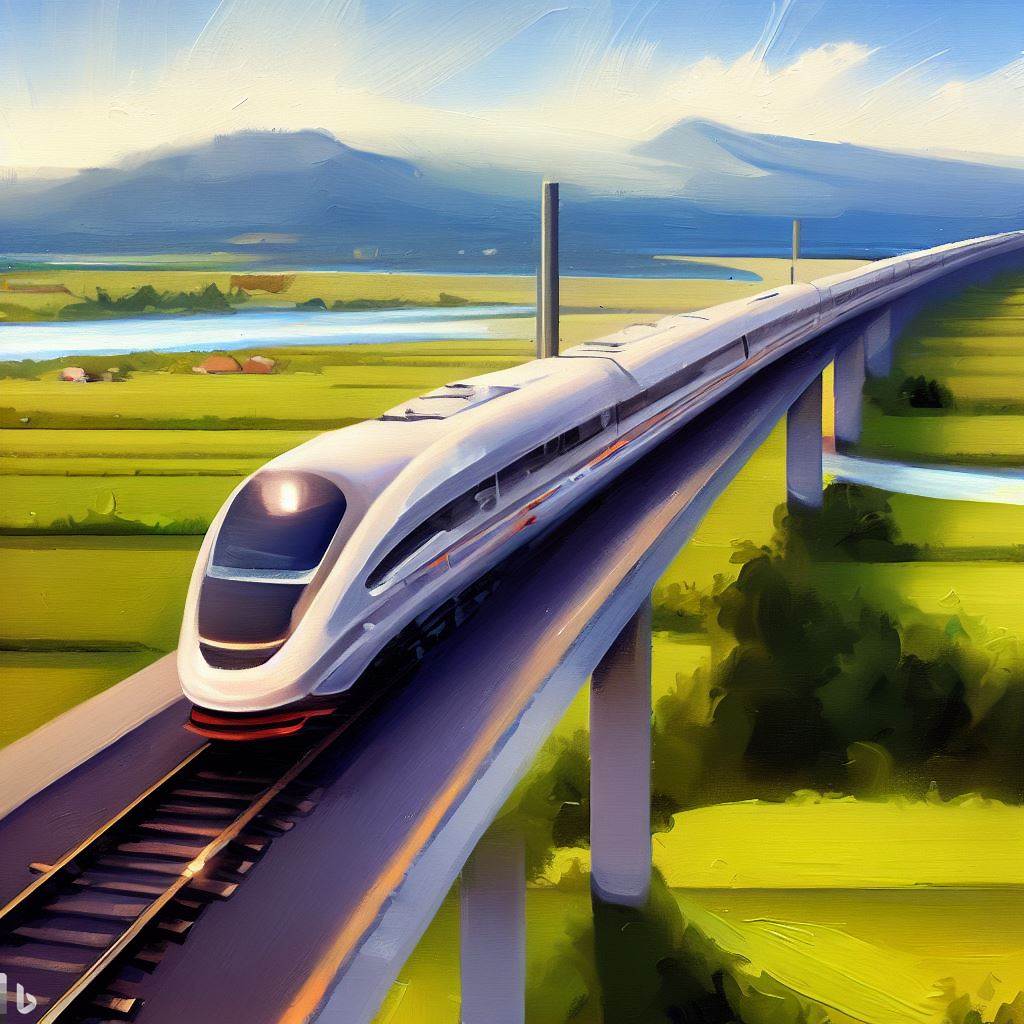- cross-posted to:
- technology@lemmy.ml
- cross-posted to:
- technology@lemmy.ml
Such a train would be a massive win for the world. Imagine being able to get from Amsterdam to Barcelona in this train in ±3 hours (including stops, probably). Making it affordable would completely destroy European flights, which is a good thing.
The equatorial circumference of the Earth is about 40,000km. That means this train will theoretically be able to travel from any point on the Earth’s surface to any other point in under 24 hours as long as there’s track. This will be an absolute game changer for building connections across Eurasia, Africa, and the Middle East going forward. It’s going to completely eliminate the need for air travel and largely make shipping obsolete I expect.
Longest single train route is the Trans-Siberian, 6300km, 876 stops.
Longest theoretically possible train trip is from Lagos to Singapore, 18,755km - if you don’t miss any train and every one arrive on time, it would take 21 days.
that’s one long ass trip :)
On a side note, i would love to see Russia getting agreement with China to modernise T-S and maybe even expand it. That would be immense boost to Eurasiatic trade and development of Siberia.
that would be pretty amazing
An Imgur link was detected in your comment. Here are links to the same location on alternative frontends that protect your privacy.
Isn’t that Lisbon, not Lagos?
It’s Lagos, Lisbon is noticeably more to the north.
I don’t think cargo ships are going to be obseleted by trains even in a scenario where all fossil fuels are banned or otherwise unavailable, because ships can take advantage of wind power (sails).
It might also be advantageous to have several of those massive 200,000+ Gross Register Ton ships retrofitted or built with nuclear reactors, especially if those ships are state operated. There’s really no reason not to when you start to reach sizes as absurd as that. A Nimitz Class Supercarrier is roughly 1/20 to 1/40 the displacement of some of those cargo vessels.
Obsoleted was perhaps too strong a word. As I mentioned in another reply, it’s more about facilitating trade across land routes that are too far from shipping centres to be viable currently.
“Get in, we’re going Snow Piercing.”
Maybe not shipping, the size of those shipping barges is incomprehensible with the sheer amount of tonnage they can carry, and dealing with tariffs, taxes, border inspections, and crossing land borders is a whole hassle in and of itself that a lot of countries and companies won’t want to deal with.
Plus, North America, South America, Oceania, and massive economies such as Japan are still separated from the rest of the world and inaccessible to rail.
Fair, I don’t expect shipping to go away entirely. It’s worth noting though that you still have to get goods on and off the ship, which is done by land. So, the bottlenecks end up being in moving things to and from the port, hence why we tend to see big economic centres close to the ports with a fall off as you get fruther from the port. On the other hand, trains have the potential to connect a lot of areas that aren’t close to the water, and kick start economic development in places where it wasn’t cost effective previously.
And of course, in the context of US trying to contain China, it makes a lot of sense for China to focus on creating economic routes through land where US can’t interfere with them.
looking forward to the future when continental travel is completely done by train! would be also a big win for my older relatives who cant travel by plane due to medical conditions. there are just so many pros for trains.
Making it affordable would completely destroy European flights, which is a good thing.
that’s the problem unfortunately. maglevs use superconductors, which have to be cooled to an insane degree (i.e. using liquid helium or liquid nitrogen in the best case) that suck up so much energy that we wont be able to use them on mass scale until we like crack fusion or something, or alternatively find a room temp atmospheric pressure super conductor.
a bullet train that could reach 620 km/h (620 mph).
Uhhh I guess that’s one way to get Americans onto Metric.
haha
That train is like 10 times faster than the fastest train in the states. And yet I hear some people say that the US is more technologically advanced compared to China 🙄🙄🙄
Ugh I swear China train reporting is of the lowest quality… What does “full-size superconducting test run” as mentioend in the CGTN article found in the linked video description mean? The video shows a train car the size of an automobile.
Is that what they mean? But how is it the “first” test run when SCMaglev in Shanghai uses superconductors and has been operating for two decades?How long is the test track? How does it compare to startups in the rest of the world? Is this “full-size superconducting test run” also a low-vacuum test? What speeds is this “full-size superconducting test run” going to achieve? Because 99% of reporting on vactrains cover test runs that do not achieve the advertised speeds. What is the name of this research team? Is it the World Artery that this article mentions, or are they unrelated? What is their relation to rail companies and government organizations? Basically, is this being taken seriously or is it just hype like in America? Also, “The new project experimental”?? “The new train is specter to be”?? Does Travel Tomorrow force their journalists to write an article in 20 minutes or something?? Bottom of the barrel reporting, guys!!edit: holy smokes everyone I am just as bad as these guys - I got the Japanese SCMaglev and the German-Chinese Shanghai Transrapid confused. SCMaglev users superconductors in their electrodynamic suspension system. I don’t think the Transrapid uses them in their electromagnetic suspension system.
The impression I get is that it’s mostly a test of actually being able to build the maglev tube, and all the components. Probably gonna be a while before they build a track of any significant size and start testing this at high speeds.
The impression I get
That’s the issue! These articles give lots of impressions but are light on the facts!
edit: 😡
I agree, it does leave a lot to speculation.
this is what you get from incremental improvement of existing technologies. instead american bazingas wonder why build good trains when hyperloop is Coming SoonTM
Everyone lie down and snuggle, we’re going on the Maglev!
We’re going to start saying “megameters” at this rate.
What if we had “low speed rail” instead. You start work at your desk/cubicle at home, and without getting up your whole cube is eventually shifted into the office while you worked… where you have enough time for those critical in-person meetings, then it scoots you back home. A one/two hour commute would probably not be bad… or even very noticable… if you did not have to deal with driving.
You wanna be trapped in a work cube for hours?
No, but it’s better than being trapped in a road-rage bubble for hours.
…it might also be nice to be PAID for my commute time.
Hear me out, working from home. No need for any commute, and then you can just send the meeting out as the email it should have been anyway












